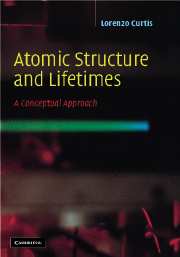Refine listing
Actions for selected content:
16950 results
Frontmatter
-
- Book:
- X-ray Polarimetry
- Published online:
- 06 July 2010
- Print publication:
- 08 July 2010, pp i-iv
-
- Chapter
- Export citation
Author index
-
- Book:
- X-ray Polarimetry
- Published online:
- 06 July 2010
- Print publication:
- 08 July 2010, pp 359-360
-
- Chapter
- Export citation
40 - Polarimetry with ASTRO-H soft gamma-ray detector
- from Part III - Future missions
-
-
- Book:
- X-ray Polarimetry
- Published online:
- 06 July 2010
- Print publication:
- 08 July 2010, pp 275-283
-
- Chapter
- Export citation
Part I - Polarimetry techniques
-
- Book:
- X-ray Polarimetry
- Published online:
- 06 July 2010
- Print publication:
- 08 July 2010, pp 9-10
-
- Chapter
- Export citation
37 - Gravity and Extreme Magnetism SMEX (GEMS)
- from Part III - Future missions
-
-
- Book:
- X-ray Polarimetry
- Published online:
- 06 July 2010
- Print publication:
- 08 July 2010, pp 251-259
-
- Chapter
- Export citation
6 - High-energy polarized photon interactions with matter: simulations with Geant4
- from Part I - Polarimetry techniques
-
-
- Book:
- X-ray Polarimetry
- Published online:
- 06 July 2010
- Print publication:
- 08 July 2010, pp 48-53
-
- Chapter
- Export citation
8 - Ideal gas electron multipliers (GEMs) for X-ray polarimeters
- from Part I - Polarimetry techniques
-
-
- Book:
- X-ray Polarimetry
- Published online:
- 06 July 2010
- Print publication:
- 08 July 2010, pp 60-65
-
- Chapter
- Export citation
35 - Fermi results on the origin of high-energy emission in pulsars
- from Part II - Polarized emission in X-ray sources
-
-
- Book:
- X-ray Polarimetry
- Published online:
- 06 July 2010
- Print publication:
- 08 July 2010, pp 238-242
-
- Chapter
- Export citation
22 - Polarization of X-ray lines from galaxy clusters and elliptical galaxies
- from Part II - Polarized emission in X-ray sources
-
-
- Book:
- X-ray Polarimetry
- Published online:
- 06 July 2010
- Print publication:
- 08 July 2010, pp 146-149
-
- Chapter
- Export citation
27 - Polarization from the oscillating magnetized accretion torus
- from Part II - Polarized emission in X-ray sources
-
-
- Book:
- X-ray Polarimetry
- Published online:
- 06 July 2010
- Print publication:
- 08 July 2010, pp 182-186
-
- Chapter
- Export citation
4 - Bragg crystal polarimeters
- from Part I - Polarimetry techniques
-
-
- Book:
- X-ray Polarimetry
- Published online:
- 06 July 2010
- Print publication:
- 08 July 2010, pp 34-41
-
- Chapter
- Export citation
14 - Probing strong gravity effects with X-ray polarimetry
- from Part II - Polarized emission in X-ray sources
-
-
- Book:
- X-ray Polarimetry
- Published online:
- 06 July 2010
- Print publication:
- 08 July 2010, pp 95-102
-
- Chapter
- Export citation
3 - Photoelectric polarimeters
- from Part I - Polarimetry techniques
-
-
- Book:
- X-ray Polarimetry
- Published online:
- 06 July 2010
- Print publication:
- 08 July 2010, pp 19-33
-
- Chapter
- Export citation
24 - Polarized X-rays from magnetized neutron stars
- from Part II - Polarized emission in X-ray sources
-
-
- Book:
- X-ray Polarimetry
- Published online:
- 06 July 2010
- Print publication:
- 08 July 2010, pp 157-167
-
- Chapter
- Export citation
43 - Studies of neutron background rejection in the PoGOLite polarimeter
- from Part III - Future missions
-
-
- Book:
- X-ray Polarimetry
- Published online:
- 06 July 2010
- Print publication:
- 08 July 2010, pp 299-304
-
- Chapter
- Export citation
1 - X-ray polarimetry: historical remarks and other considerations
-
-
- Book:
- X-ray Polarimetry
- Published online:
- 06 July 2010
- Print publication:
- 08 July 2010, pp 1-8
-
- Chapter
- Export citation
Contents
-
- Book:
- X-ray Polarimetry
- Published online:
- 06 July 2010
- Print publication:
- 08 July 2010, pp v-viii
-
- Chapter
- Export citation
1 - Newtonian gravity
-
- Book:
- Advanced Mechanics and General Relativity
- Published online:
- 05 June 2012
- Print publication:
- 08 July 2010, pp 1-55
-
- Chapter
- Export citation
Index
-
- Book:
- Advanced Mechanics and General Relativity
- Published online:
- 05 June 2012
- Print publication:
- 08 July 2010, pp 363-367
-
- Chapter
- Export citation

Atomic Structure and Lifetimes
- A Conceptual Approach
-
- Published online:
- 06 July 2010
- Print publication:
- 30 October 2003
